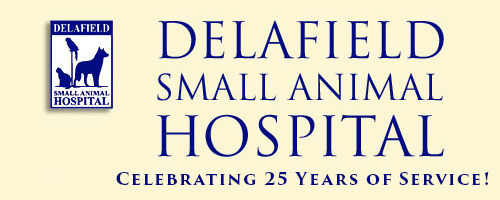Library
-
Parathyroid tumors are uncommon in dogs and cats. Benign adenomas occur more often than malignant tumors. Keeshonds appear to have a genetic predisposition to developing parathyroid tumors, but no breed or genetic relationship has been established in cats. Pets may exhibit signs of lethargy, little or no appetite, vomiting, and muscle twitching. Diagnosis is confirmed with PTH testing and ultrasound of the neck region after hypercalcemia is observed on bloodwork. Surgery to remove the affected gland(s) is the typical treatment, but ultrasound-guided ablation may be pursued. Careful monitoring of calcium levels post-surgery is important, as some pets may develop transient hypocalcemia and require calcium supplementation. Prognosis is excellent, and the metastatic rate for these tumors is extremely low.
-
Paroxetine is given by mouth and is used off label to treat certain behavior disorders such as aggression, anxiety, and urine-marking. Give as directed by your veterinarian. Common side effects include sleepiness and decreased appetite. Do not use in pets that are allergic to it or other SSRIs, or pets currently taking MAOIs. If a negative reaction occurs, please call your veterinary office.
-
Patent ductus arteriosus (PDA) is a heart defect that occurs when the ductus arteriosus (an opening between the aorta and the pulmonary artery) fails to close at birth. A PDA is usually diagnosed when your veterinarian hears a continuous heart murmur during a routine physical examination of your puppy. This article explains PDA and discusses signs, treatment, and prognosis for this condition.
-
Penetrating wounds can look minor on the surface but may cause severe injury below the skin. A thorough assessment requires sedation or anesthesia and surgery may be required to address the extent of the injury. This handout outlines first aid steps a pet owner can take while transporting their injured pet to the veterinary hospital.
-
Penicillin G (brand names VetriPen G, PenOne Pro, others), is an antibiotic used to treat susceptible infections in cats, dogs, chickens, horses, livestock, ferrets, hedgehogs, rabbits, and other animals. It is used off label (extra label) in cats, dogs, and other companion animals. Penicillin G comes in injectable suspension form. Caution when using in rabbits and other animals sensitive to penicillin-like drugs.
-
A Penrose drain is a latex tube placed into a wound with one or two ends exiting the skin to passively remove unwanted fluid, usually from abscesses or open wounds. This handout provides post-operative wound care instructions for cats sent home with a Penrose drain.
-
Pentosan polysulfate sodium is an injectable disease-modifying osteoarthritis drug (DMOAD) used to treat non-infectious and traumatic arthritis in dogs. It is also used off-label in cats. Follow your veterinarian’s instructions on how to administer the injection and dispose of the needle and syringe appropriately. Side effects are rare when given according to label recommendations and at prescribed intervals. Do not use in pets with a known hypersensitivity to it, in pets with known or suspected bleeding disorders or immune-mediated arthritis, or in pets with severe kidney or liver disorders.
-
Pericardial effusion refers to the abnormal accumulation of fluid in the sac surrounding the heart. Pericardial effusion can have a number of underlying causes, including inflammation, infection, cancer, and hereditary defects. Mild cases of pericardial effusion may be asymptomatic, but more significant fluid accumulations can interfere with the heart’s function and lead to severe effects such as sudden death. Treatment and prognosis is dependent upon the underlying cause of the condition.
-
A perineal hernia is a protrusion of tissue through the muscle of the perineum. Potential causes, clinical signs, and treatment are explained. The prognosis ranges from good to poor, depending on the ability to perform surgery and the pet's response to surgery. Perineal hernias have the potential to be life-threatening.
-
A perineal urethrostomy (PU) is a surgical procedure that is most commonly performed on male cats with a urinary obstruction. Male cats develop urinary obstructions much more readily than female cats, due to differences in urinary tract anatomy between the two sexes. A PU creates a new urinary opening that decreases the length of the urethra and allows urine to bypass this narrowed region. Less commonly, PU may also be done in cats with severe urethral trauma. After surgery, your cat will be required to wear an Elizabethan collar (e-collar) to prevent self-trauma to the surgical site.
